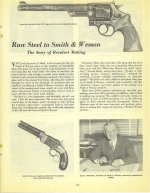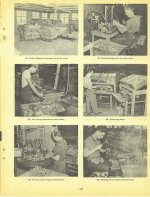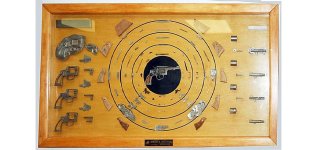I started this thread so I would not undermine Gun Relics thread about his pre model 24. Does anyone know how S&W produces their grips or stocks pre or post war? Are the Left & Rights cut from the same block of wood or are Rights made in one run then Lefts made in a different run & then someone mates or matches them up to form a pair?
I realize that S&W may have subcontracted grip production outside the factory such as when Sile was an authorized grip maker for Colt. Believe it or not shoes are made this way and someone physically matches them up for color, leather grain, size etc. That's why I'm asking this question.
A custom grip maker would absolutely make a pair of grips from a single block of wood But would mass produced grips follow this same course of action? Tia for any replies, but curiosity motivated me to ask this question.
I realize that S&W may have subcontracted grip production outside the factory such as when Sile was an authorized grip maker for Colt. Believe it or not shoes are made this way and someone physically matches them up for color, leather grain, size etc. That's why I'm asking this question.
A custom grip maker would absolutely make a pair of grips from a single block of wood But would mass produced grips follow this same course of action? Tia for any replies, but curiosity motivated me to ask this question.



